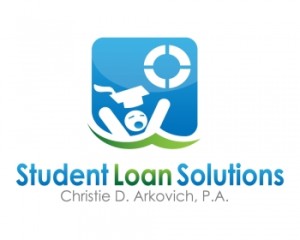 New signs of trouble for student loan borrowers
New signs of trouble for student loan borrowers
BY SETH FROTMAN
Earlier this year, we asked you to share your stories about student debt stress. More than 30,000 of you responded, telling us that student loan servicers (the companies that send you a bill each month) can make it harder to manage your loans and may contribute to our nation’s growing student loan default problem.
Last week, we published a report based on your stories and issued a call for industrywide reforms to protect consumers.
Building on this work, today, we released our annual report on student loan complaints , taking a closer look at the problems experienced by certain student loan borrowers. We are particularly concerned about repayment problems facing those with older federal student loans that were made by banks and other private lenders. We found that servicing issues may make repaying student debt even harder for this group of borrowers, in particular.
Federal student loan borrowers may have loans made directly by the Department of Education (Direct Loans) or loans made by a private lender. Most federal student loans were made by private lenders until 2010 when the program (known as the Federal Family Education Loan Program or FFELP) was ended. These loans were once the most common way to borrow for college and borrowers with these loans still make up nearly a third of all student loan borrowers— owing more than $370 billion in outstanding debt.
Today’s report found that federal student loans made by private lenders may have a greater rate of borrowers in default and delinquency than the broader student loan market. This raises concerns about whether distressed borrowers with these loans are getting adequate information on repayment options from their servicers.
In fact, while the CFPB estimates that more than one-in-four student loan borrowers are delinquent or in default market-wide, today’s report reveals that at least 30 percent of FFELP borrowers—more than five million in total— are behind on their loans or are already in default. As one FFELP borrower told us:
“I have a loan with [servicer] and I have not been given any help dealing with my payment options. I have filled out applications for an [income-based repayment plan] and forbearance. Customer service is constantly giving me false information and not helping me to get my payments lowered…Please, help me. I am trying hard not to allow my loans to go into default. I am not trying to ignore my loans but how can I pay a $2,000 monthly payment. They are not helping me to resolve this payment to a payment that I can afford.”
Today’s report also notes:
- Borrowers with federal loans made by private lenders report that they run into roadblocks when trying to access income-driven repayment plans, despite the right under federal law to do so. Borrowers with these loans generally have a right to enroll in payment plans that set their monthly payment based on their income. The complaints we received show that some student loan borrowers had trouble getting accurate information, having paperwork processed on time and staying on track once they were able to enroll. These problems can increase costs for borrowers and may contribute to driving some borrowers into default.
- More than 1-in-5 of these borrowers are past-due or are not making payments, but are not yet in default. We also asked some of the largest student loan companies to share information about how their customers with these loans are doing. We looked at a sample of this data and found that more than 12 percent of these borrowers are behind and more than 10 percent are in forbearance (asking their servicer to let them take a break from making payments)—potentially signs of significant distress. We also know that more than four million borrowers with these loans are already in default, based on data published by the Department of Education.
- Ninety-five percent of these borrowers are not enrolled in income-driven repayment plans. For the first time, today’s report sheds light on how many of these borrowers are enrolled in income-driven repayment plans. We found that, despite the widespread availability of these plans, the overwhelming majority of borrowers in our sample were not enrolled. This is particularly concerning given that borrowers in the standard monthly payment plan default on their loans at nearly five times the rate of borrowers who enrolled in income-based repayment, by one recent estimate.
Continuing signs of student debt stress among borrowers with federal loans made by private lenders is cause for concern. There remain many unanswered questions about how these borrowers fare over time, in part because there is very little public information available about the performance of federal loans made by private lenders.
Today’s report also calls for better information about the entire student loan market, including more details about delinquencies, defaults, and how borrowers in income-driven payment plans fare over time. It also shows why last week’s call to establish clear and consistent industry-wide standards is an important part of the Bureau’s ongoing work to help make sure student loan borrowers are treated fairly.
If you are in Florida, please contact atty Arkovich Law. if you have further questions about your options for private or federal student loans or visit our Student Loan Resource Center.
 Reboot Your Life: Tampa Student Loan and Bankruptcy Attorney Blog
Reboot Your Life: Tampa Student Loan and Bankruptcy Attorney Blog

